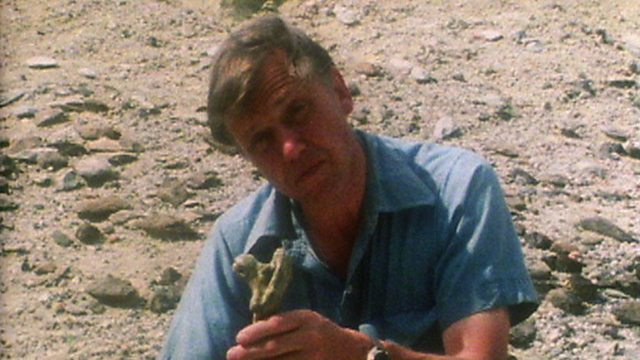
The ape-man stands upright and uses tools
To mark his new stance, science gave him a new name - Homo erectus or upright man - and he spread over the African plain. Stone tools tell us that man was using tools with skill.
The ape-man became better at walking, his legs lengthened to increase his stride, and he grew to a height of about five and a half feet. To mark his new stance, science gave him a new name - Homo erectus or upright man.
The sole of his foot acquired an arch, bringing a spring to his stride, and his first toe grew to take the thrust of his foot. A million years ago the species spread widely over the African plain.
Their fossils are rare since bodies lying out in the open are eaten by scavengers and bones are worn into dust, but in some places their stone tools still litter the ground in huge numbers, showing that homo erectus was using his dexterous hands with increasing skill.
They were producing hand axes for digging up roots, cleavers for butchering animals, and chipped cobblestone that were used either for pounding vegetables or as weapons.
The reason scientists think they have been used as weapons is because the site of the tools is also the site of many animals bones, particularly those of an extinct baboon, and most of the bones have been split open to reveal the marrow.
Another interesting thing about the site where many of tools can be found is that the stone for the tools is not from the area and must have been brought from more than 30 kilometres away. This suggests foresight and planning.
Also, the extinct baboon was probably large and ferocious so the prehistoric people probably hunted it in teams, which means they were extremely skillful at communicating amongst themselves.
Duration:
This clip is from
More clips from Life on Earth
-
![]()
Lucky pups—The Rise of the Mammals
Duration: 03:29
-
![]()
Millennia of millipedes—The First Forests
Duration: 01:50
-
![]()
Creatures of the night—Life in the Trees
Duration: 01:16
-
![]()
Scent sense—Life in the Trees
Duration: 02:55





